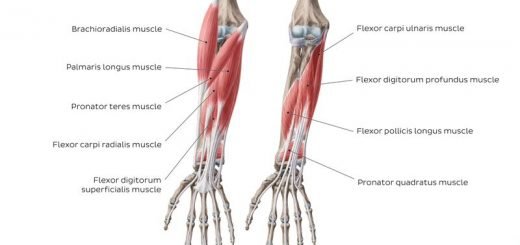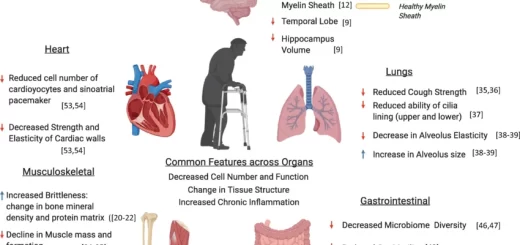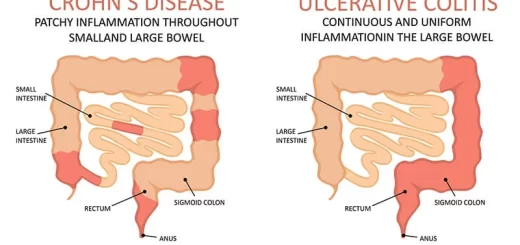Joints of lower limb, Hip joint, Knee joint, Tibio-fibular joints structure and movements
The leg is located between the knee joint and the ankle joint, Foot bones are divided into three groups, Posterior portion of the foot is formed by a group of seven bones, each of which is known as the tarsal bone, whereas the mid-foot contains five elongated bones, each of which is a metatarsal bone, The toes consists of 14 small bones, each of which is the phalanx bone of the foot.
Joints of the lower limb
The bones of the lower limb consist of 30 bones which are the femur, patella, tibia, fibula, tarsal bones, metatarsal bones, and phalanges. The femur is the single bone of the thigh, The thigh is located between the hip joint & knee joint.
The hip joint
Type: Synovial (Ball & Socket).
Articular surfaces: head of femur & acetabulum.
The acetabulum has:
- An articular surface called a lunate surface which is C-shaped.
- Its floor is non-articular and called acetabular fossa.
- Its lower margin shows a notch called acetabular notch that is converted into an acetabular foramen by the transverse ligament of the acetabulum.
- It is deepened by a fibrocartilaginous rim called labrum acetabular.
Capsule:
To the hip: the capsule is attached to the margins of the acetabulum and the transverse acetabular ligament.
To the femur: the capsule is attached to the bases of the greater and lesser trochanters and to the intertrochanteric line anteriorly, while posteriorly it is attached to the neck of the femur about one and half cm medial to the intertrochantric crest.
Synovial membrane: It lines the capsule and covers the structures inside the hip joint except the articular surface. The round ligament of the head of the femur is invested with a tube of the synovial membrane. The synovial membrane is continuous with psoas bursa through an opening in the front of the capsule.
Ligaments:
Intracapsular: The only intracapsular ligament is the round ligament of the head of the femur. It is a relatively small ligament that nurs from the acetabular fossa to the fovea of the head of the femur. It encloses a branch of the obturator artery, which carries blood supply to the head of the femur.
Extracapsular: There are three extracapsular ligaments, and they are continuous with the outer surface of the hip joint capsule.
- Ilio-femoral lig: Y-shaped, attached between the anterior superior iliac spine and both ends of the intertrochanteric line. It prevents hyperextension.
- Pupo-femoral lig: Triangular in shape, attached between ilio-pubic eminence and the capsule. It prevents hyperabduction.
- Iscio-femoral lig: from ischium to the back of the capsule. It becomes tense in medial rotation.
Movements and muscles responsible:
- Flexion: Psoas major, Iliacus, rectus femoris, sartorius, pectineus.
- Extension: Gluteus maximus, hamstring.
- Abduction: Gluteus medius, minimus, tensor fascia latae.
- Adduction: Adductor longus, brevis, magnus, gracilis, pectineus.
- Medial rotation: Gluteus medius & minimus, tensor fascia latae.
- Lateral rotation: The 6 lateral rotators: Obturator internus, 2 gemelli, piriformis, obturator externus, quadratus femoris + gluteus maximus, adductors.
Blood supply of hip joint:
Vascular supply to the hip joint is achieved via the medial and lateral circumflex femoral arteries (from profunda femoris artery), and the artery to head of the femur (from obturator artery).
The medial circumflex femoral artery is responsible for most of the arterial supply (the lateral circumflex femoral artery has to penetrate through the thick iliofemoral ligament to reach the hip joint), the damage to the medial circumflex femoral artery can result in avascular necrosis of the femoral head.
Stability of the hip joint
The hip joint is a very stable joint because the head of the femur fits accurately to the acetabulum and labrum acetabular, and due to the three strong ligaments outside the capsule, and the surrounding strong muscles.
The knee joint
- Type: Synovial, modified hinge.
- Articular surfaces: Lower-end femur, upper-end tibia & posterior surface of the patella.
- Capsule: The capsule is attached to the margins of the articular surfaces and it surrounds the sides and posterior aspect of the joint. On the front of the joint, the capsule is absent where it is replaced quadriceps tendon, patellar retinacula, and ligamentum patella.
Extracapsular ligaments
- Ligamentum patella is attached above the lower border of the patella and below to the tuberosity of the tibia, It is a continuation of the central portion of the common tendon of the quadriceps femoris muscle.
- The lateral collateral ligament is cordlike and it is attached above to the lateral epicondyle of the femur and below to the head of the fibula, The tendon of the popliteus muscle intervenes between the ligament & the lateral meniscus.
- The medial collateral ligament is a flat band and it is attached above the medial epicondyle of the femur and below to the medial surface of the shaft of the tibia, and it is firmly attached to the edge of the medial meniscus.
- Oblique popliteal ligament is the tendinous expansion derived from the semimembranosus muscle, and it strengthens the posterior aspect of the capsule.
Intracapsular ligaments
- Anterior cruciate ligament
- Posterior cruciate ligament
Synovial membrane
The synovial membrane lines the capsule and it is attached to the margins of the articular surface, It extends up beneath the quadriceps femoris muscle above the patella, forming the suprapatellar bursa, and the synovial membrane is reflected backward from the posterior surface of the ligamentum patellae to form the infrapatellar fold.
The synovial membrane is prolonged downward on the deep surface of the tendon of the popliteus at the back of the joint, It forms the popliteal bursa, The bursa is interposed between the medial head of the gastrocnemius and the medial femoral condyle and the semimembranosus tendon; this is termed the semimembranosus bursa.
The synovial membrane is reflected forward from the posterior part of the capsule around the front of the cruciate ligaments, so, the cruciate ligaments lie behind the synovial cavity and they are not bathed in synovial fluid.
Bursae related to knee joint
Numerous bursae are related to the knee joint, They are found wherever skin, muscle, or tendon rubs against bone, Four are situated in front of the joint, and six are found behind the joint, The suprapatellar bursa and the popliteal bursa always communicate with the joint, and the semimembranosus bursa may communicate with the joint.
Structures inside the knee joint
- The medial semilunar cartilage (medial meniscus): C-shaped, It is fixed to the capsule of the knee joint and to the medial collateral ligament (liable to injury).
- The lateral semilunar cartilage (lateral meniscus): Circular in shape, It is more mobile (separated from capsule and lat. collateral lig. by popliteus tendon), so, it is more adaptive for twisting movement and less liable to injury.
- Anterior cruciate ligaments: From the anterior intercondylar area of the tibia to the lateral femoral condyle, It prevents hyperextension, It also prevents the posterior displacement of the femur on the tibia.
- Posterior cruciate ligaments: From the posterior intercondylar area of the tibia to the medial femoral condyle. It prevents anterior displacement of the femur over the tibia.
- Popliteus tendon.
Nerve supply of the knee joint: Femoral, obturator, tibial and common peroneal nerves.
Arterial supply of the knee joint: From the anastomosis around the knee.
Movements of the knee joint
- Flexion: By the hamstring muscles, gracilis, gastrocnemius, sartorius, popliteus & plantaris.
- Extension: By the quadriceps femoris, and tensor fascia latae.
- Locking: i.e. medial rotation of the femur on the tibia in full extension. It is done by the anterior cruciate, the collateral, and the oblique popliteal ligaments and biceps.
- Unlocking: i.e. lateral rotation of the femur on the tibia in standing (tibia fixed or medial rotation of the tibia in supine or sitting (tibia free). It is done mainly by popliteus, sartorius, gracilis, semitendinosus, and semimembranosus
Tibio-fibular joints
Type:
- Superior Tibio-Fibular: Synovial, plane.
- Inferior Tibio- Fibular: Fibrous, syndesmosis.
Articular surfaces:
- Superior Tibio-Fibular: Head of fibula, Fibular facet of tibia.
- Inferior Tibio- Fibular: Fibular notch of the tibia, and Rough triangular area on the medial side of lower end fibula.
Ligaments:
- Superior Tibio-Fibular: Anterior and posterior tibiofibular ligaments.
- Inferior Tibio- Fibular: Interosseous, anterior, and posterior tibiofibular ligaments.
Ankle joint structure, ligaments & function, Arches of the foot, High Arches & Flat Foot
Arteries of leg and foot, Veins & Lymphatics of the lower limb
Blood vessels of lower limb, Superior & Inferior gluteal artery, Femoral & Popliteal artery
Deep fascia of the foot, Extensor expansion of toes, Dorsum & Sole of the foot
Leg nerves types, Injuries of nerves of the lower limb & Sciatica causes
Gluteal region structure, muscles, nerves & Posterior compartment of thigh muscles



